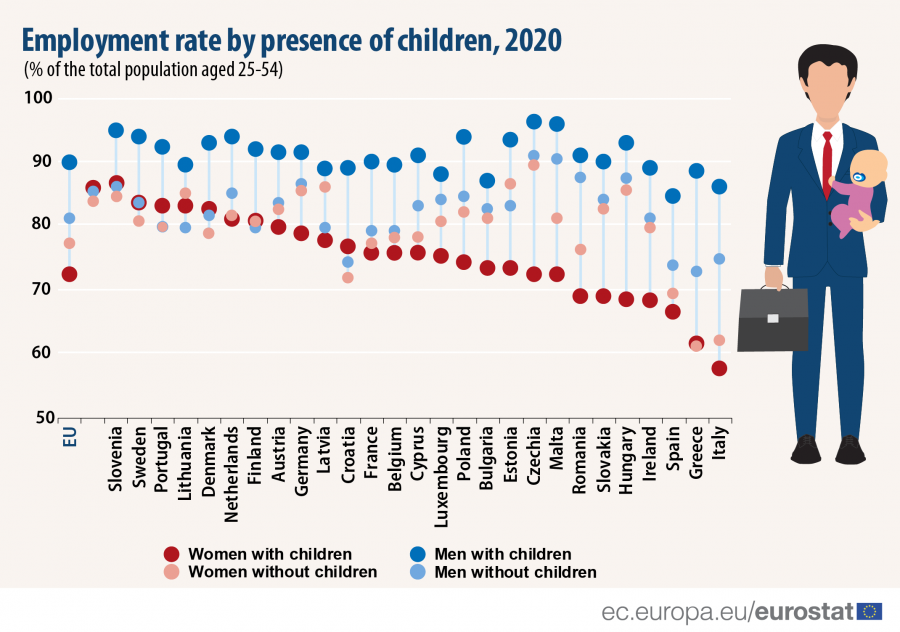Eurostat: Statistics on employment characteristics of households

This article, using the European Union Labour Force Survey (EU-LFS) data, gives insight into characteristics of households with regard to employment. Results are presented for the EU as a whole, for all EU Member States individually, but also for four candidate countries (Montenegro, North Macedonia, Serbia and Turkey).
More statistics on this topic can be found in the Eurostat database under the section households statistics (see LFS series - specific topics). This article is nicely complemented by the articles Employment - annual statistics, Unemployment statistics and beyond and Household composition statistics.
Overview of employment in EU households
In the EU, in almost 6 in 10 households all adults living in the household were employed in 2020 (57.5 % of all private households) as it can be seen in Figure 1. Precisely, in 40.5 % of the households all adults were working full-time and in 17.0 % at least one adult was working part-time and all other adults (if any) were working full time. By contrast, in 26.4 % of the households at least one adult was not working and at least one adult was working and in 16.1 % no adults were working.
This picture differs when the presence or not of children in the household is considered. In 61.8 % of households with economically dependent children, all adults were employed against 54.9 % of households without children in 2020. These shares can be broken down as follows: all adults were working full-time in 39.0 % of households with children against 41.4 % in absence of children and, at least one adult was working part-time and all other adults (if any) were working full-time in 22.8 % of households with children, that is significantly more than for households that do not include children (13.5 %). Furthermore, in 30.0 % of households with children, at least one adult was working and one adult was not working. However, this share reached 24.2 % among households without children. Finally, among households with children, 8.2 % did not encompass any employed adults while this share reached 20.9 % among households without children.
Comparing the situation in 2010 and in 2020 as displayed in Figure 1, it is clear that the share of households in which all adults were working increased significantly over the last decade: +4.3 percentage points (p.p.) for households with all adults working full-time, and +1.4 p.p. for households with at least one adult working part-time and all other adults (if any) working full-time. Similar increases are observed regardless of the presence of children. However, larger differences are visible among households including at least one adult working and one adult not working: their share decreased by 5.0 p.p. among households with children but by 2.2 p.p. among households without children. Moreover, the households in which no adults were employed decreased less for households with children than for households without children (-0.7 p.p. against -3.6 p.p. respectively).
At national level, all adults were working in more than two thirds of the households in Sweden, Denmark, Germany, the Netherlands and Estonia, recording the highest shares in the EU (see Figure 2). However, focusing only on households in which all adults were working full-time, Czechia ranked first with 59.3 % of the households, followed by Estonia (56.4 %) and Lithuania (56.3 %). Croatia and Poland recorded the highest shares of households in which at least one adult was working and one adult was not working (46.2 % and 38.1 %, respectively). By contrast, in 2020, Greece and Belgium had the highest percentage of households in which no adults were working (21.7 % for both), followed by Sweden (19.3 %), France (19.2 %), Italy (18.8 %), Spain (17.7 %) and Austria (17.0 %). Turkey showed also in 2020 a percentage above 20 % (21.7 % as Greece and Belgium).
Read full article HERE
Source: ec.europa.eu/eurostat/


